This rich, mild (or hot, if you choose to add wild chilies) curry paste gets its name from the Muslim people of southern Thailand. Its exotic perfume comes from sweetly fragrant spices such as cloves, cardamom and cinnamon. Thai cooks use this paste in hearty stew-like dishes and as the principal ingredient of Curried Peanut Satay Sauce, the dipping sauce for grilled satays.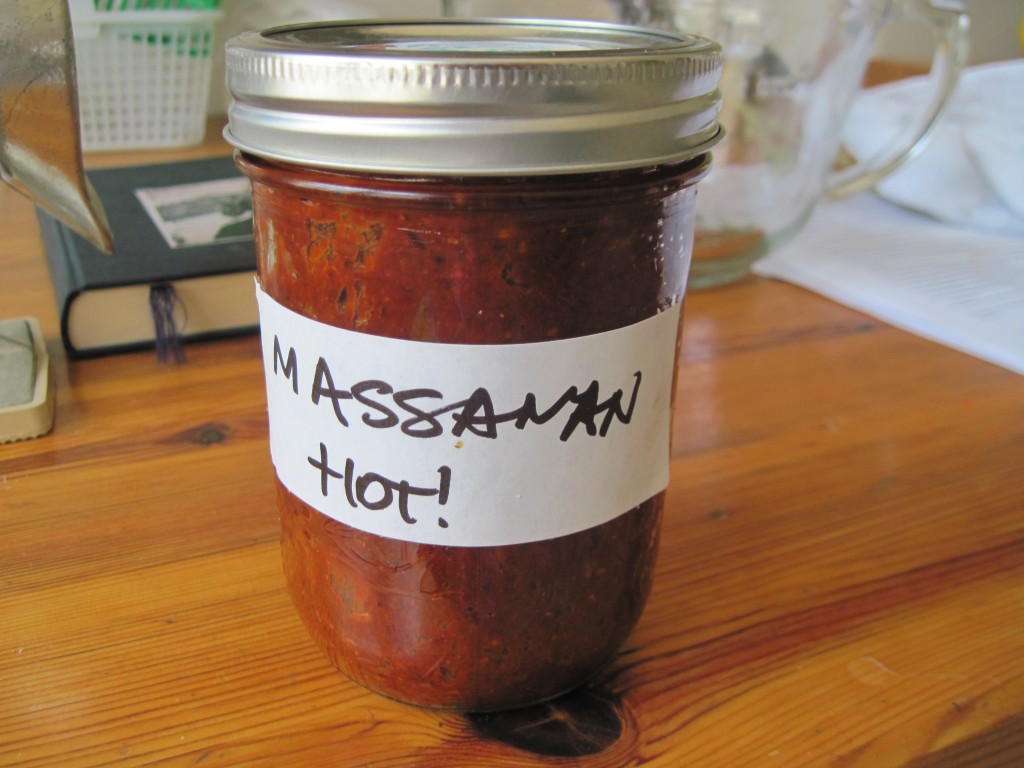 You need a blender; a large heavy mortar is also recommended, but I imagine one could cheat with blender only.
You need a blender; a large heavy mortar is also recommended, but I imagine one could cheat with blender only.
The presence of shrimp paste is a shock to novice oriental food preparers: it stinks terribly – but the stench does go away in process, and the result is worth the suffering.
Set up below makes solid 500 ml – more than enough for about 4 portions of Curried Peanut Satay Sauce. My advice is to make a double batch in the summer with all the windows open – and store it in the fridge (cut the misery and have the paste ready on demand). But then you must be somewhat loyal to Thai Cuisine ..
- 4.5 oz. approximated to 140g dried red California chilies (i used also New Mexico ones, when in short supply, but you can check with chili guide, if considering substitutions and feel confident about it),
- 3 cardamom pods, husked
- 2 tsp whole cumin seed
- 2,5 tbsp whole coriander seed
- 2 full tbsp shrimp paste (kapi), wrapped neatly in a double layer of aluminum foil
- 1/2 tsp whole black peppercorns
- 3 whole cloves
- 1/3 tsp ground cinnamon
- 1 large stalk and 1 small (or 2 medium (:-)) lemon grass, tough outer leaves discarded, lower stalk trimmed to 7 cm and finely sliced
- 1,5 tbsp finely chopped, peeled fresh Siamese ginger (galanga or kha) or common ginger
- 80 ml chopped garlic
- 125 ml chopped shallots
- With kitchen shears or a chef’s knife, stem the chilies and shake out most of the seeds.
- Cut the chilies in half lengthwise and remove any tough, dried ribs.
- Cut them crosswise into 3/4″ pieces and put them in a bowl.
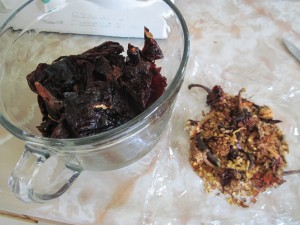
- Add water to cover and soak for 30 minutes.
- Meanwhile, combine the cardamom, cumin, and coriander seeds in a small skillet.
- Dry-roast the spices over medium heat for 3 to 5 minutes, until toasty and aromatic, shaking the pan often to prevent burning.
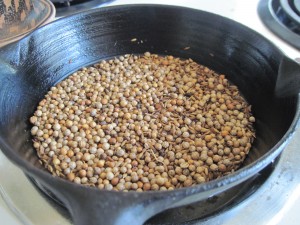
- Transfer the spices to a small bowl and set aside to cool.
- Set the skillet back over medium heat.
- Place the foil-wrapped shrimp paste in the skillet and cook for about 5 minutes, until aromatic, turning the packet over once or twice.
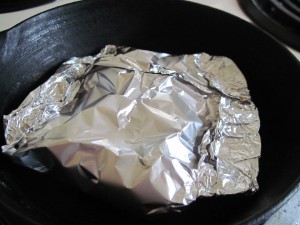
- Remove the packet from the skillet and set it aside to cool.
- Combine the peppercorns, cloves, cinnamon, and the roasted spices in a large heavy mortar and grind to a powder.
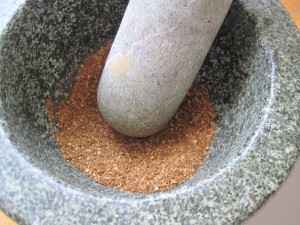
- Transfer the ground spices to the bowl of a food processor fitted with a metal blade.
- Put the lemon grass and ginger in the mortar and pound for a few minutes to break down the fibers.
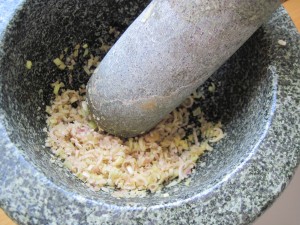
- Transfer the crushed mixture to the food processor.
- Pound the garlic and shallots in the mortar just until crushed and transfer them to the food processor.
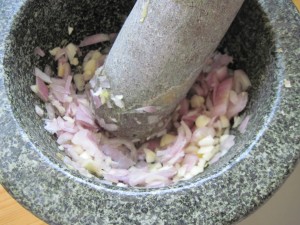
- Unwrap the shrimp paste and add it to the food processor.
- Drain the chillies, reserving about 1/2 cup of the soaking liquid.
- Add the chillies to the food processor.
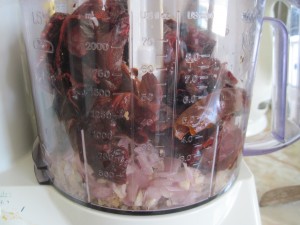
- Process the ingredients until a rich, moist paste forms, stopping occasionally to scrape down the sides of the work bowl.
- Add a few tablespoons of the chilly-soaking liquid now and then, if needed, to ease the grinding.
This paste can be stored in an airtight container in the refrigerator for 2 months, or in the freezer for up to 3 months.